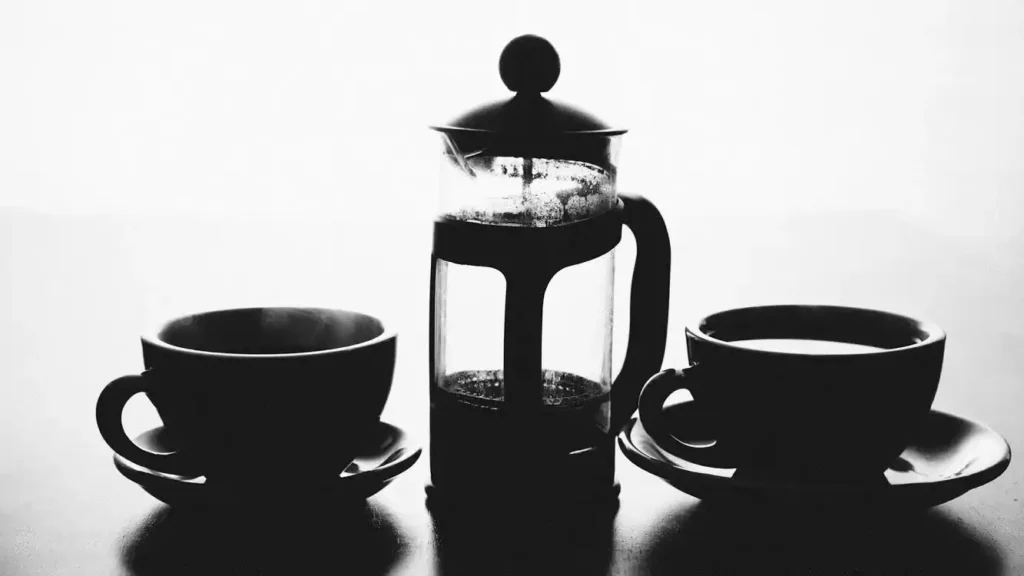Coffee aroma is a world of shades created by hundreds of chemical compounds that together form the character of the drink. Its depth and mood are revealed even before the first sip. The flavor perceived by the tongue (sweetness, acidity, bitterness, saltiness, or umami) is only part of the overall impression. The real magic happens when the smell and taste merge into a single whole, creating that recognizable profile that we remember and seek out again.
Beans contain more than 800 volatile compounds that are formed during roasting. They create floral, fruity, nutty or chocolate notes. The combination of various factors, from the variety to the method of preparation, makes the flavor of coffee truly unique.

The birth of coffee flavors
The origin of the beans shapes the character of the coffee even at the growing stage. Climate, altitude, and soil all affect the chemical composition of the coffee berry, and thus the future flavor. For example, beans from Ethiopia have bright floral or citrus notes, while coffee from Brazil is more nutty and chocolatey. During roasting, coffee beans undergo complex chemical reactions, including the Maillard reaction and caramelization. As a result, new aromatic compounds, such as esters, aldehydes, and ketones, are born from simple sugars and amino acids, which create a multifaceted flavor profile. Because these substances evaporate quickly, fresh beans have the most distinctive flavor. Even a few hours after grinding can significantly reduce its intensity. Even a few hours after grinding can reduce the intensity of the aroma.
What does coffee smell like? The main categories of coffee flavors
Floral notes resemble jasmine, lavender, rose. Most often found in Arabica varieties from Africa.
Fruity shades. From apple to tropical mango. They are especially characteristic of “washed” grains.
Nutty flavors. Almonds, hazelnuts, cashews – these shades are often characteristic of coffee from South America.
Chocolate and caramel tones. Dark roasting tends to enhance caramel and chocolate notes.
Spicy notes. Cinnamon, cloves, and nutmeg are more common in coffee from Indonesia or as a result of specific processing methods.
Earthy shades. Found in some varieties of Robusta or Indonesian Arabica. They can resemble damp earth, wood, or tobacco.
The four pillars of coffee flavor
The taste of coffee is a whole set of sensory experiences that arise from the balance of several key elements. The most important of these are acidity, sweetness, bitterness, and body. To this list, it is worth adding another subtle component – umami, which is not always obvious, but significantly enriches the profile of the drink.
Acidity in coffee is not about unpleasant acidity, but about a bright, juicy note that resembles a ripe apple, grape or citrus and makes the drink lively and expressive. Properly balanced acidity adds freshness and complexity to coffee. If there is too much, it creates a harsh, unpleasant vinegar-like flavor.
Quality beans have a natural sweetness. Sweet notes can resemble caramel, honey, or even chocolate. This element not only makes coffee tastier, but also balances acidity and bitterness, creating a harmonious taste.
Bitterness is naturally present in beans, especially after roasting. But it is important that it is pleasant, like in dark chocolate. Its level depends on the degree of roasting, water temperature, brewing time, and even grinding. Choose fresh coffee, don’t overheat the water, and avoid excessive extraction.

Body and texture
The body can be light, ethereal or, on the contrary, thick, enveloping, almost creamy. In any case, it’s about the physical sensation of coffee in your mouth. It is influenced by the variety, the way the beans are processed, roasted, and the method of preparation. A good body adds depth and makes you want to savor every sip.
Umami: the fifth element
Umami is often found in naturally processed beans or in dark roasted espresso blends. It is difficult to describe umami in words, but easy to recognize when it is present: the drink seems fuller, deeper, and leaves a long, pleasant aftertaste.
What determines the flavor
This is the result of a subtle interplay of many factors, and each of them plays an important role in how we perceive the drink. First of all, the variety and origin of the beans. For example, Arabica is known for its complex, rich palette. You can taste notes of flowers, fruit, chocolate, or spices. Robusta has a simpler, often earthy or woody profile with a less pronounced palette.
The degree of roasting is equally important. A light roast preserves the natural flavors of the bean, allowing floral, citrus and berry notes to emerge. Darker roasting displaces light volatile compounds and intensifies caramel, chocolate and nutty flavors that are formed during the Maillard reaction.
The brewing method also affects how the coffee smells. For example, espresso, due to its high pressure, concentrates aromatic oils and creates a rich profile with a powerful, intense flavor. Filtered coffee, on the other hand, allows you to feel more nuances. It is light, transparent, but no less interesting from the point of view of organoleptics.
Don’t forget about the freshness of the grain. Immediately after grinding, the grain begins to lose its odor, and within a week the flavor profile is much poorer. Therefore, it is better to grind the grains just before cooking.
Light, moisture and oxygen are the main enemies. Airtight, opaque packaging and a dry, cool place are important to preserve the coffee’s flavor for as long as possible.

How we sense flavor
Aroma perception occurs in two ways: orthonasal (we inhale the aroma before swallowing), and retronasal (the aroma rises from the mouth to the nose after swallowing). It is the retronasal perception that allows us to feel the true depth and complexity of the coffee profile. Olfactory receptors actively interact with gustatory receptors to create a complete picture of the taste. That is why the aroma significantly affects our perception of sweetness, acidity or bitterness. A drink that is too hot does not allow you to feel delicate notes. That is why many professional tasters do not evaluate coffee immediately, but gradually, at different stages of cooling. To truly experience the bouquet, it is important to drink coffee consciously, focusing on each breath and sip.
Flavoring coffee
What is flavored coffee?
The flavored version appeared in the United States in the 1970s. It was used to improve the flavor of low-quality beans. Today, it has become a popular way to diversify the coffee experience.
Flavoring agents are added to the roasted beans to add new flavors, such as vanilla, caramel, or spices. Flavoring can be natural or artificial. In the first case, natural oils, spices, or extracts are used, while in the second case, synthetic flavors are used. While artificial flavors are more intense, natural flavors usually have a milder and more natural profile.
Flavoring methods
There are several ways to flavor coffee, each of which gives the drink unique shades. One of the easiest is to add natural ingredients directly to the beans or ground coffee. These can be pieces of dried fruit, spices (cinnamon, cardamom), flowers, or even vanilla pods. This method produces a mild, natural flavor.
Another common method is to use flavoring oils or essences. They are added to the roasted beans in small amounts and mixed thoroughly. The oils are of both natural and synthetic origin and impart a brighter, more persistent flavor.
The third option is to use syrups or extracts. They are usually added to the finished drink, not to the grains. This is a convenient way for those who want to experiment with flavors without replacing the product itself. Syrups allow you to create new flavor combinations right in the cup, making each cup of coffee special.
Popular flavor additives
Among the most popular flavor additives to coffee is vanilla, which adds tenderness and sweetish warmth; both classic bourbon and Tahitian or Madagascar flavors are used. Caramel notes make the drink soft and dessert-like, while chocolate notes add depth and richness. Nutty flavors, such as almonds, hazelnuts, or walnuts, add warm, creamy tones to the coffee. Citrus notes refresh and add brightness, often using orange or lemon. Spices, such as cinnamon, nutmeg, cloves, create a cozy atmosphere and a unique flavor, especially in seasonal blends.
How to create flavored coffee at home
Making flavored coffee at home is absolutely possible! It’s a fascinating process that allows you to experiment with flavors and create unique combinations to suit your mood. First of all, it’s important to choose high-quality ingredients: fresh beans with a medium roast bring out additional shades, and spices, dried fruits, or natural essences should be free of unnecessary impurities and artificial flavors.
Then experiment with proportions. Start small: for example, a few drops of vanilla essence or a pinch of cinnamon per 100 g of beans. Watch how the flavor changes and adjust the amount of spices to your liking.
Feel free to combine flavors: vanilla with walnut, orange with chocolate, or cardamom with honey. The main thing is not to overload the coffee profile, while maintaining balance.
After flavoring, it is best to store the beans in an airtight jar, away from light and moisture. This homemade approach not only diversifies the coffee experience, but also makes each cup unique.

How to develop taste experience
The first step is to train your olfactory receptors. Regularly inhale the aromas of spices, fruits, flowers, and chocolate. This will help you recognize the same notes in coffee more easily.
The next step is to keep tasting notes. Write down what you feel in each cup: aroma, taste, aftertaste, acidity, body of the drink. Over time, you will notice how your observations become more accurate.
Comparing different coffees is a great way to learn how to distinguish the nuances. Brew several samples at the same time and take turns tasting them. The contrast between the Ethiopian fruit flavors and the Brazilian nutty and chocolate depth is unmistakable.
And don’t forget about the influence of the environment: the smells in the room, the lighting, even your mood can change the perception of taste. Create a comfortable atmosphere for tasting, and coffee will reveal its secrets.
Conclusions.
The aroma of coffee is an extremely complex and yet fascinating world made up of hundreds of volatile compounds that are formed by the origin of the beans, the degree of roasting, the method of preparation, and even storage conditions. It often determines our first impression of coffee, shaping its character and depth.
To better understand coffee flavors, you need to develop your senses: smell the beans, compare different varieties, taste in a quiet environment, and take notes. Don’t be afraid to experiment. Home coffee flavoring will also open up new facets of taste for you. It is important not only to study but also to feel: listen to your reactions, distinguish subtle notes, and enjoy the process.
And most importantly, the taste experience is always individual. The flavor of one coffee is perfect for one person, while another may find it too bright or mild. There is no single standard or benchmark in the world of coffee. There is only a personal path on which the aroma is the right guide to individual satisfaction.






